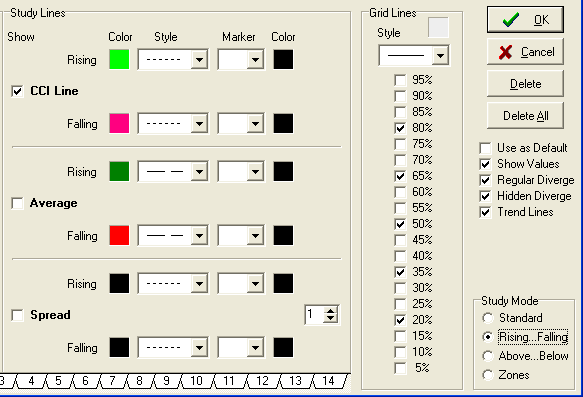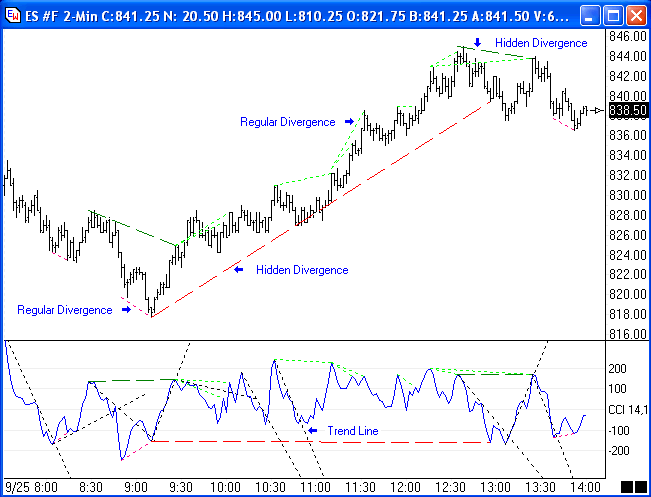October 2002Article:
Thinking In Probabilities
by Larry Pesavento
It is a given that traders can not win 100 percent of the time,
because with reward comes risk, and losses are as much a fact of
life as taxes and death. But there are highly valuable lessons
to be learned about the trading process that go far beyond dollar
signs. How traders put reliable steps in place to ensure that
their performance may be enhanced on the road to success is
dependent not only on what is done correctly but also on what
potentially havoc-wreaking mistakes can be avoided.
The three practical principals that can aid in anticipating and,
possible, avoiding mistakes are probability, self-discipline
and responsibility – simple enough to write, but harder
to carry out.
No successful trader would deny that mental preparation is just
as necessary as charts and market signals. Trading is all
about probabilities and, while every trader encounters a losing
streak or draw down of equity, success as a trader is measured by
how well losses are handled mentally.
A "sure" sign of potential disaster is holding large losses in
open positions while at the same time taking many small
profits. This is contrary to the market adage by a wise
trader/mentor from Commodity Corporation, Amos Barr Hostetter, who
said, "Take care of your losses and your profits will take care of
themselves." A trader who mentally dupes himself into
believing that the small profits will offset the large losses is
taking a dangerous ostrich approach.
Most losing streaks are the result of probability
distribution. In 100 trades, a system should encounter a
losing streak of up to eight trades in a row, and this is the time
when the trader begins to question the validity of the system.
It also normally is the worst time to stop trading as long as the
trader has followed his methodology, because it’s been shown that
winning streaks generally follow losing streaks.
Examining daily trading logs enables the trader to spot some
common trading mistakes such as lack of discipline, sloppiness in
trade preparation, impulse trading, impatience, and all of the other
cousins and uncles in the "mistake family." One of the big
advantages of the pattern recognition method of swing trading is the
probability associated with each pattern. Winning is a matter
of executing all of the trades as the patterns develop.
Traders must train themselves to think in terms of probability
for three very important reasons:
- No one knows with 100-percent certainty whether the trade will
be profitable or not.
- No one knows how much money will be made or lost on a trade.
- If the trader does not control the profit outcome and does not
know with 100-percent certainty which trades will work, then the
trader should spend 100-percent of his time concentrating on the
only element of the trade he can control – the risk of the
trade.
Key to success is the ability to pinpoint how much one can afford
to lose. Winners think "how much can I lose?" while losers
think "how much can I win?" This fact is easy to demonstrate.
Anyone visiting Las Vegas – has been greeted by brightly colored,
flashing slot machines that beckon the full-pocketed tourist with
the promise "Win One Million Dollars!" However, no visitor has
ever seen a sign that reads, "This machine has taken in three
million dollars this year." When the trader truly learns how
to think like the "house", the probability of winning is
increased.
Thinking about losing requires discipline. By focusing
acutely on a trading plan, the probabilities for profits or losses
and streaks of each, and risk control, risk-taking becomes more
manageable and can give traders the ultimate gift – freedom.
In fact, making discipline a daily habit allows traders "to weave a
habit of a strand a day of discipline until the cable of discipline
is almost unbreakable."
Discipline in trading presents itself in several parts. First,
there is preparation. Trading is simple, but it takes
time. Many hours of preparation occur long before any
trade is entered. These steps include:
Mental – Traders must think through what risks are present in
the trade, and know in advance how to get out of the trade and at
what point. Mental preparation, from my experience, also assumes
eliminating or limiting alcohol consumption from Sunday through
Thursday of the trading week, because it typically takes up to 24
hours to completely leave the blood system. It’s best to have
the brain working at an optimal level.
Technical – Methodologies vary by the individual
trader. All trading opportunities should be explored. A
daily ritual of scanning charts will present many good
opportunities. This is the time-consuming part of
trading. Opportunities, however, do not guarantee
profits.
Physical – Traders need to release tension in a positive
way. Take time to do some type of exercise like golf, tennis
or walking.
Discipline is also necessary on the execution side of
trading. Risk control is the most critical element of the
tracing process. Never forget how a devastating loss can
destroy the ‘psyche." It damages the trader’s soul.
Monitoring a profitable trade in progress also requires
discipline – follow the trading plan. Do not be concerned
about minuscule fluctuations if your goal is higher. There are
two questions that every trader should ask: "Has the market changed
since I placed the trade? Can I afford the risk on this
trade?" If the answer to both of these questions is "yes" the
trader should stay in the trade.
Along with discipline, responsibility plays a significant role in
the trading game. Once in the market, the trader alone has
responsibility for his or her trading decisions – no one else.
Not assuming personal responsibility is like jumping into a
fast-moving river without a life jacket in the hopes that there is a
lifeguard somewhere on the shore. The trader can keep afloat
only if he is responsible for his own destiny. Take joy in the
good decisions and learn from the bad ones. Place the orders,
close the orders and take the profits. Or, swallow hard, and
take the loss if that’s the responsible thing to do and your plan
points in that direction.
Traders can and do fall into the habit of making excuses about
why something went wrong. Again quoting Hostetter, "Forget
your profits, but forget you losses faster."
Taking responsibility can be improved by including a few steps or
reminders in the trading plan. What works for one trader might
not work for another. The way to handle this is to place a
written statement on the computer. The statement says:
Has the pattern in the trade changed from the original
pattern? Has the initial price objective been reached?
If the answer to both of these questions is "yes" its time to
exit the trade. If the answer is "no" then the trade must
continue; trading is a business of dealing with probabilities,
not certainties. Hostetter held that, "We never know
which trades will work; the problem arises when we only ‘think’ we
know."
Probability, discipline and responsibility are traits that every
trader should strive to attain. Probability assures that
losing streaks will develop just as winning streaks will. What
matters are how to recover from those losses. Discipline and
responsibility help to prevent devastating losses and aid in
recovery. Have the discipline to exit or stay in a trade, and
take responsibility for the actions. Again, losses are not 100
percent preventable, however, with the right trading strategies and
mental focus, many may be avoided.
Trading Tip:
Full Moon Influence
by
Howard Arrington
This daily chart of the e-mini shows high correlation with the
moon. The bars are colored from a Full Moon to the following
Full Moon.

Trading Tip:
Commodity Channel Index
Properties
by Howard Arrington
A popular chat room that follows the CCI study on 3-minute charts
uses these properties for Ensign Windows.

The colors and the line styles used by the Regular Divergence,
the Hidden Divergence and the Trend Lines are set using the 6 lines
shown in the next image. Change the Study Mode to be
Rising..Falling so the 6 rows show as in the following
image. The top two rows are used by Regular Divergence
lines. The middle two rows are used by the Hidden Divergence
lines. The bottom two rows are used by the Trend
Lines. So my Trend Lines are dotted black lines.
If you use a black background you would obviously need to select a
non-black color for your trend lines. The divergence and trend
lines are optional and show when their check boxes are checked.

After setting the colors and lines styles for the divergence and
trend lines, change the Study Mode back to the mode you prefer, such
as to Standard. The regular divergence, hidden divergence and
trend lines are automatically drawn as illustrated in this
example.

Feature Tip:
E-mail Chart Images
by Howard Arrington
Ensign Windows makes it easy to e-mail a chart image to
anyone. Open a chart and then press CTRL-E to display the
following e-mail form in Ensign Windows.

The chart image was saved in the compressed PNG format
and will be attached to the e-mail. You can enter a message to
accompany the picture. Enter the recipient's e-mail address in
the Other edit box and check the Other check box. The e-mail
tool can also send the e-mail to multiple addresses by entering them
in the List and checking the List check box. Click the
Send button to transmit your message and attached
picture. |